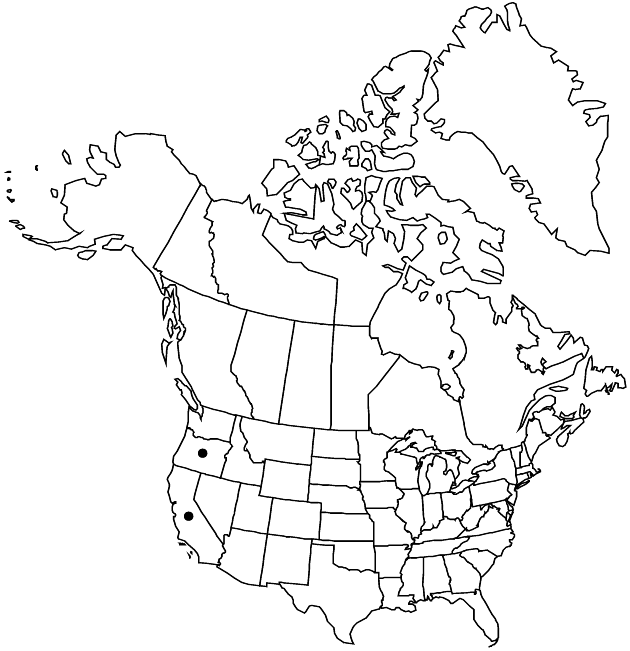Difference between revisions of "Calycadenia fremontii"
in W. H. Emory, Rep. U.S. Mex. Bound. 2(1): 100. 1859.
FNA>Volume Importer |
FNA>Volume Importer |
||
| Line 11: | Line 11: | ||
|name=Calycadenia ciliosa | |name=Calycadenia ciliosa | ||
|authority=Greene | |authority=Greene | ||
| + | |rank=species | ||
}} {{Treatment/ID/Synonym | }} {{Treatment/ID/Synonym | ||
|name=Calycadenia elegans | |name=Calycadenia elegans | ||
|authority=Greene | |authority=Greene | ||
| + | |rank=species | ||
}} {{Treatment/ID/Synonym | }} {{Treatment/ID/Synonym | ||
|name=Calycadenia pauciflora var. elegans | |name=Calycadenia pauciflora var. elegans | ||
|authority=Jepson | |authority=Jepson | ||
| + | |rank=variety | ||
}} | }} | ||
|hierarchy=Asteraceae;Asteraceae tribe Heliantheae;Asteraceae (tribe Heliantheae) subtribe Madiinae;Calycadenia;Calycadenia fremontii | |hierarchy=Asteraceae;Asteraceae tribe Heliantheae;Asteraceae (tribe Heliantheae) subtribe Madiinae;Calycadenia;Calycadenia fremontii | ||
| Line 41: | Line 44: | ||
-->{{#Taxon: | -->{{#Taxon: | ||
name=Calycadenia fremontii | name=Calycadenia fremontii | ||
| − | |||
|authority=A. Gray in W. H. Emory | |authority=A. Gray in W. H. Emory | ||
|rank=species | |rank=species | ||
| Line 56: | Line 58: | ||
|publication year=1859 | |publication year=1859 | ||
|special status= | |special status= | ||
| − | |source xml=https://jpend@bitbucket.org/aafc-mbb/fna-data-curation.git/src/ | + | |source xml=https://jpend@bitbucket.org/aafc-mbb/fna-data-curation.git/src/eaa6e58056e40c9ef614d8f47aea294977a1a5e9/coarse_grained_fna_xml/V19-20-21/V21_672.xml |
|tribe=Asteraceae tribe Heliantheae | |tribe=Asteraceae tribe Heliantheae | ||
|subtribe=Asteraceae (tribe Heliantheae) subtribe Madiinae | |subtribe=Asteraceae (tribe Heliantheae) subtribe Madiinae | ||
Revision as of 19:38, 16 December 2019
Plants 10–100 cm; self-incompatible. Stems simple or branched (main axes usually obvious, branches relatively few, ± rigid), hispidulous to strigose (especially proximally, usually strigose with scattered, stouter hairs distally). Leaves mostly alternate, 2–8 cm (proximal), hispid to hispidulous and ± long-hairy (especially on margins and adaxial faces). Heads borne singly or in open, spiciform arrays (1–2+ per node). Peduncular bracts narrowly elliptic to oblanceolate, 2–10 mm (hispidulous, ± bristly and/or strongly pectinate-fimbriate) apices rounded or truncate, tack-glands 1–5+. Phyllaries 3–7 mm, abaxial faces ± hispidulous, ± bristly, shaggy long-hairy on distal margins, tack-glands (0–)1–5+. Paleae 3–7 mm (receptacular cups ± campanulate, lengths often ± equaling diams.). Ray florets (1–)2–6; corollas white or cream to pinkish, or yellow (sometimes basally reddish), tubes 1–2 mm (± papillate, throats sometimes with dark red “eyes”), laminae 4.5–7 mm (central lobes ± equaling or narrower than laterals, mostly obovate, widest beyond middles, sinuses nearly equaling laminae). Disc florets (4–)6–21; corollas white to pinkish, or yellow, 4–5 mm. Ray cypselae 2.5–4 mm, smooth, glabrous or glabrate. Disc cypselae 2–4 mm (often ± angular), appressed-hairy; pappi of 8–14 long-aristate and short-blunt, fimbriate scales 1–3 mm (alternating). 2n = 12.
Phenology: Flowering spring–fall.
Habitat: Open, dry meadows, hillsides, gravelly outwashes, rocky barrens in chaparral associations
Elevation: 50–1400 m
Discussion
Calycadenia fremontii is variable and not easily divisible. It ranges from Siskiyou County through Mendocino, Lake, and Butte counties in California with one outlying population near Grants Pass in southern Oregon. Genetic change and chromosome repatterning have produced an extremely complex taxon that (as here circumscribed) includes populations with individuals to 20 cm and extensively branched with white corollas as well as populations with individuals to 100 cm and unbranched or with relatively few branches with yellow corollas. Some relatively small forms with white corollas are more closely related to tall forms with yellow corollas than they are to each other. At present, there is no known combination of characters that allows reasonably consistent delimitation of these or other elements within this assemblage of populations. The present circumscription combines three previously described species, including one traditionally considered an element of C. pauciflora. Additionally, C. fremontii intergrades with C. pauciflora (see discussion under 10. C. pauciflora).
Selected References
None.
